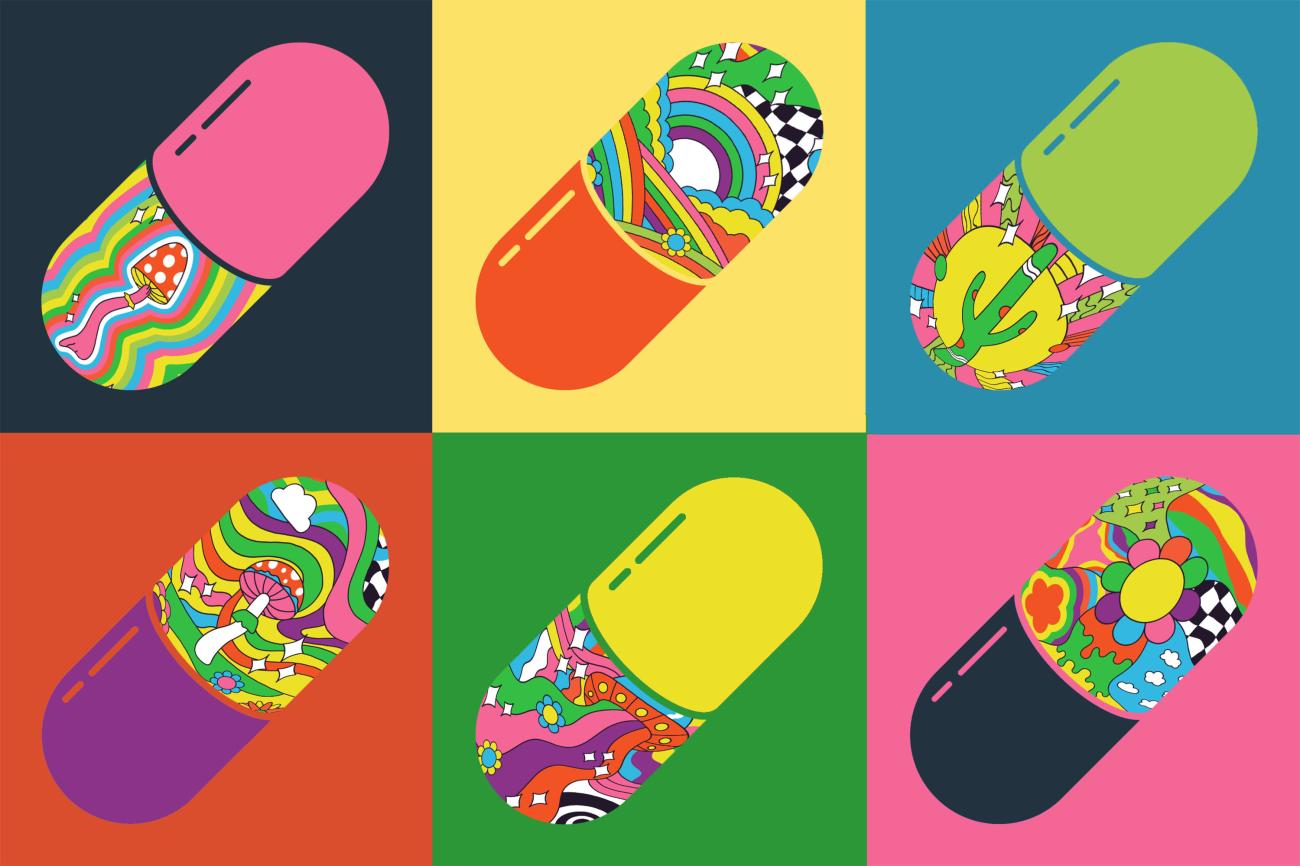Pharma investors watch psilocybin trials because they can open new treatment lines, reset views on durable outcomes, and create adjacent service markets around therapy delivery and data. The sector links drug development with clinical operations, pharmacy controls, and therapist training. That mix draws capital that wants clear milestones and records that prove each step.
Why pharma investors watch psychedelic trials
Large unmet need drives interest. Depression that resists first line care, PTSD that does not respond to standard therapy, and addiction remain major burdens. Psilocybin programs target these areas with designs that blend a controlled dose session with preparation and follow up. That creates a path that can show strong effect sizes if teams execute with care and trials enroll the right patients.
The model also offers visible gates. Investors can track IND clearance, first patient in, first dose, database lock, and readout. In session heavy designs you can add site startup proof, pharmacy intake drills, and therapist capacity checks. Each gate lowers risk if records match the plan. That cadence suits pharma finance teams that tie position size to de risked steps.
A third factor is the link to real world use. Programs must teach sites to run safe sessions, store product, and protect the blind. Sponsors must show that therapy manuals hold up across centers. These demands push companies to publish more artifacts than a typical CNS program. Investors who read those artifacts gain a clear view of execution quality.
Potential for new drug pipelines
Psilocybin creates pipeline options at several levels. Molecule paths include synthetic routes with IP around formulation, deuteration, or delivery. Natural paths include standardized extracts with tight assay control and matched placebo. Both can support line extensions if data support distinct dosing plans or clinics show capacity for different indications.
Indication variety is real. Major depressive disorder and treatment resistant depression lead attention. Anxiety disorders, alcohol use disorder, and end of life distress have active or recent trials. Adjacent lines include cluster headache and pain in certain settings. Therapy adds a second layer. Sponsors can refine preparation visit content, dosing day environment, and integration workflows. These refinements can produce durable changes in outcomes and safety profiles across indications.
Pipelines also extend into support markets. Therapy training, therapist supervision, pharmacy services, and specialty CRO capacity all sit near the core molecule. Lab networks that validate assay methods and cross check psilocybin and psilocin values grow with trial count. Payers will ask for durable benefit and safe delivery. That means better data tools and post approval evidence programs. Pharma investors can hold core molecule exposure and place smaller stakes in these service lines to balance risk.
Impact of breakthrough therapy designations
Breakthrough therapy designations matter because they can speed feedback loops with the agency and focus resources. They do not grant approval, yet they create more touchpoints and help programs refine endpoints and study designs earlier. For a category where set and setting drive outcomes, early dialogue improves the odds that a pivotal plan will match real clinical practice.
Investors should read what sits under the headline. Key items include the target indication, the patient population, and the outcome measures that won attention. Study teams should be able to share high level rationales and point to how the next protocol reflects prior feedback. You should see stronger safety monitoring, clear handling of functional unblinding, and label plans that match storage and chain of custody. When these items are present, the designation has real weight for timelines and valuation.
Breakthrough status can also shape partner interest. Large pharma looks for clarity on path and scale. The designation signals potential on both. It can pull in co development talks, options, or structured deals that fund pivotal work while capping dilution for smaller sponsors. That flow matters for investors who seek exposure to later stages without full early risk.
Synergies between psychedelics and CNS drug portfolios
Psychedelics fit within CNS portfolios through both scientific and operational links. On the science side, interest in neuroplasticity aligns with programs in depression and addiction. Sponsors can frame mechanistic threads that connect across assets. On the operations side, therapy delivery pushes companies to build networks of trained teams and pharmacies. Those networks can serve other CNS programs that need close monitoring or complex visits.
Payers will press for long horizon outcomes and cost offsets. A CNS group with disease management skill can apply those models to psilocybin. That means digital tools to track symptoms, safety, and function for months. It also means call center support and visit scheduling that prevent missed windows. Firms with these assets can scale faster when a psychedelic therapy reaches late stage or approval.
CRO and site synergies exist as well. A sponsor that owns session room designs, role coverage maps, and drill scripts can reuse them across trials. The same is true for placebo design and blind protection. A pharmacy playbook that covers intake, storage, and kit handling lowers startup time and cost. These synergies raise margin on each new study and shorten the path from plan to first dose.
As suppliers, we align kit maps, label sets, and shipment records with hospital workflows, then join mock intake so site steps match documents and cartons. That kind of support reduces intake holds and protects the blind, which in turn keeps visit calendars stable and data clean.
Why investors should track trial data closely
The category moves on data. Headlines help, yet durable value comes from clean datasets that stand up to peer review and agency questions. Pharma investors should watch two types of information. The first is top line numbers, such as remission rates and effect sizes at set timepoints. The second is the set of process measures that reveal execution strength.
Key process signals include
- Visit window adherence at each site
- Deviation rates and how quickly issues were fixed
- Dropout reasons with counts that tie to therapy load and logistics
- Cross lab assay agreement for psilocybin and psilocin
- Any signs of functional unblinding and how the team addressed it
- Stability results that match actual storage at each site
These items often appear in investor decks, conference posters, or data rooms after readouts. If a sponsor can share them quickly, it likely has strong controls. If not, model more variance and slower timelines.
Investors should also read how placebo performed. In session based trials, placebo design and support matter. A poor placebo can inflate effect sizes in early work, then fade in larger runs. A robust blind lowers that risk. Look for records that show training on neutral language, room conditions that do not hint at active doses, and label sets that protect allocation.
Building practical diligence habits
A short repeatable checklist helps. Use it across names to compare risk and readiness.
- Read the clinical registry entry and confirm endpoints and timing
- Ask for one redacted import packet and the matching shipment memo
- Review one certificate of analysis with chain of custody to a site
- Confirm that stability studies mirror site storage and transport
- Read an interlab comparison plan and pass limits for assays
- Review therapy manuals and supervision schedules for staffing depth
- Check site startup cycle times from contract to SIV to first dose
Each item links to a point of failure that can add months and cost. When a team has answers, the odds of on time readouts rise. When answers lag, risk grows.
Where value can emerge first
Not all value waits for approval. Service lines around training, site setup, pharmacy support, and analytics can grow with trial count. Lab networks that publish strong method work can gain share as sponsors align on standards. Suppliers with clean export records and matched labels can win contracts across programs. These businesses can build revenue with each new study, not only with a single pivotal win.
Developers still carry the largest upside. A strong Phase 2 with clear safety and a plan that reflects agency feedback can rerate a program. A clean Phase 3 can change the category. Yet the setup work often shows first in the process data. Investors who track those signals early can position ahead of the market.
What psilocybin research means for pharma investors
Psilocybin research offers entry points across the value chain. Molecule IP, delivery advances, and therapy protocols build the core. Service and supply lines add steady growth tied to trial volume. Global links widen site options and speed enrollment. The thread that ties it all together is operational quality backed by records.
Pharma investors should track milestones and read the files that sit under each one. When permits match, labels protect the blind, and sites dose on time, data quality rises. When multiple regions show agreement on methods and outcomes, the path to payers and regulators looks stronger. That is where durable value takes shape.
The next steps are clear. Build watchlists that mix developers with suppliers and services. Tie position sizes to gates such as first dose and database lock. Ask for artifacts that prove claims. Hold capital for follow ons when teams hit those gates. In a field that runs on both science and delivery, the companies that show their work will stand out.




